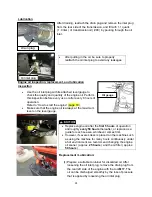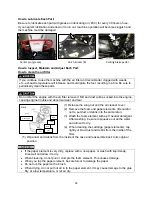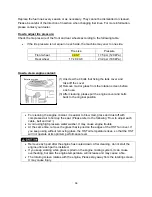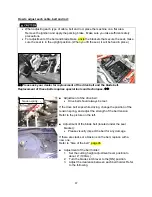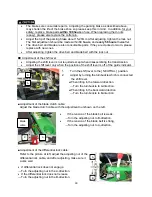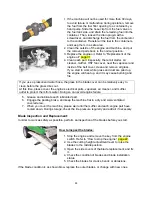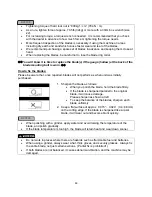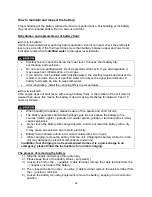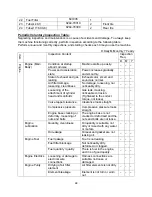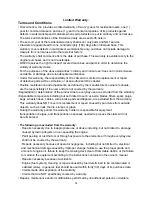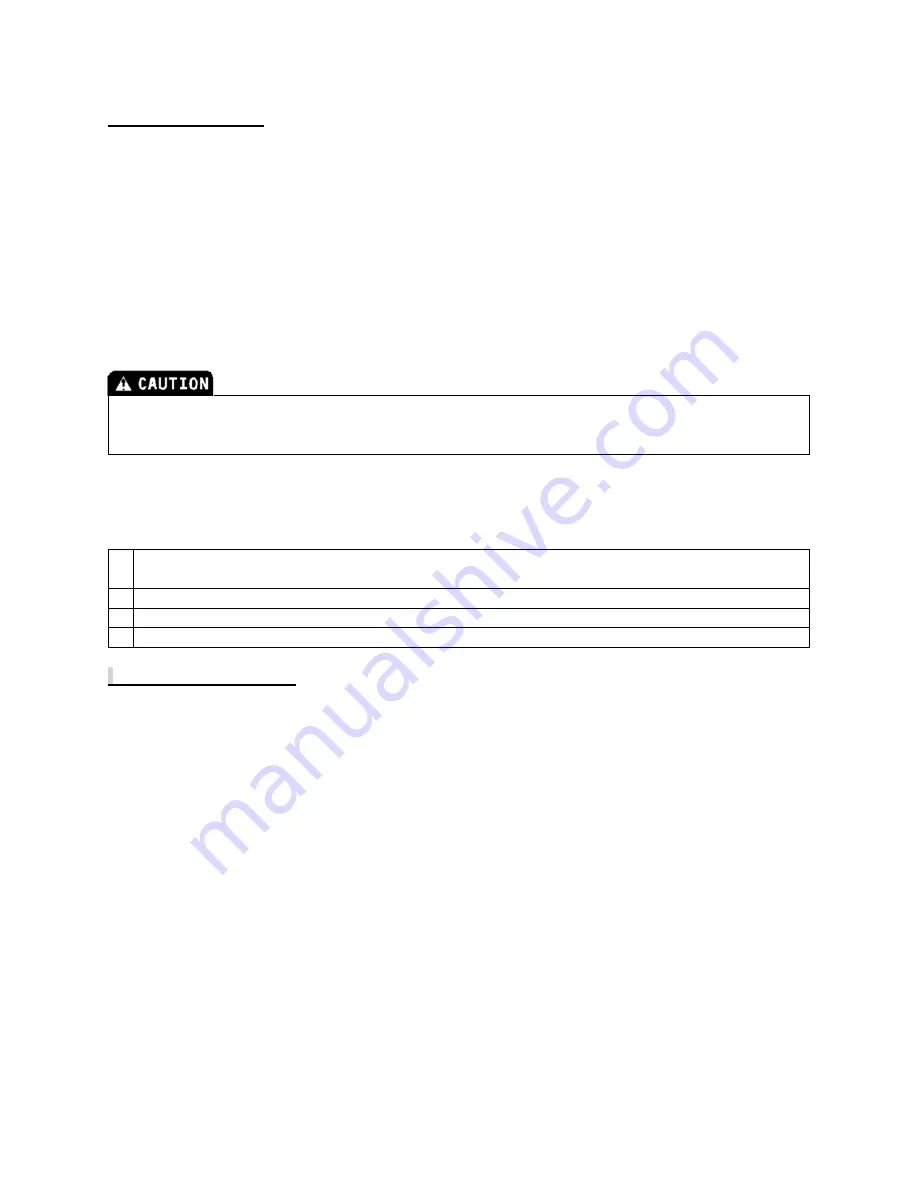
45
Auxiliary Charging
Refer to “Approximate Battery Charge Time.” Charger sold separately.
1) Before using the charger, make sure the power is off. If the power is on and the battery
is connected, a spark will occur and may cause an ignition or explosion.
When using a charger with a boost function, please follow the instructions of the
charger. Mishandling can cause the battery to explode and damage the equipment.
Charge the battery in a well-ventilated area, and do not expose to fire as it may cause
an ignition or explosion.
2) C of charger to + of battery, and also connect – of charger to – of battery.
Incorrect connection may cause electrical failures and burned wiring.
3) Remove all six vent plugs.
4) For auxiliary charging, observe the normal charge current and charge time. Not doing
so may cause liquid leaks, ignitions or explosions.
Fast charging is not appropriate for charging a battery which has been dead for a long
time. If fast charging is necessary, make sure to charge less than the current rated
capacity of the battery.
5) After auxiliary charging, return the 6 vent plugs to their original locations.
■Estimation of the auxiliary charge completion (meet the following conditions):
1 Electrolyte specific gravity is over 1.270 / 68 °F (20 °C) and continues for more than one
hour at a constant level.
2 Terminal voltage is over 15V and continues for more than one hour at a constant level.
3 The gas is generated from each cell.
4 The charging time is reached.
Installation Procedures:
1) Make sure there are no foreign objects on the mounted battery unit. Place the new
battery in with the mounts corresponding to the cables. Fasten the battery with the
mounting bracket.
2) Connect the + cable terminal to the + battery terminal*, and tighten the bolt firmly.
3) Then, connect the – cable terminal to the – battery terminal, and tighten the bolt firmly.
4) Greasing the inner sections of the cable terminal’s metal parts will help prevent rust.
*If the cable terminal is corroded, clean it with a wire brush or sand paper.
Starting:
After installing the battery unit in the machine, start the engine. Engine should start within 5
seconds, if it does not start, wait for more than 10 seconds and try it again. If it still does not
start, the battery life may be low; please check the starting circuit and battery.
Battery Life:
While the battery is in use, its capacity decreases gradually, and it will eventually run out.
If the battery does not re-charge when you do an auxiliary charge, replace with a new battery
A battery’s life is shortened by the following factors:
High temperature
Frequent use ( it is affected by either to little or too much use ).

